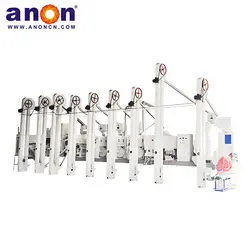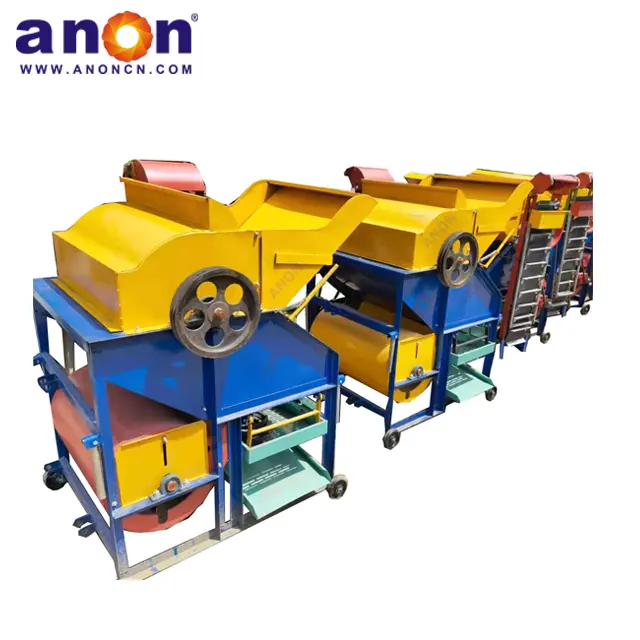Parboiled rice, also known as steamed rice or converted rice.
With the advancement of technology, more and more people are consuming this special type of rice. It is also becoming more popular because people’s living standards are improving. This article will talk about the benefits of parboiled rice and how it is made.
Are you ready to learn more about this? Let’s start!

内容
What is Parboiled Rice?
Parboiled rice undergoes a hydrothermal process. In this process, the starch in rice grains is gelatinized through the action of steam and hot water. This method allows the rice to fully absorb nutrients while developing a delicious flavor and texture. Additionally, the boiling process effectively eliminates pests, enhancing the rice’s shelf life.
Grains undergo several processes, including cleaning, soaking, steaming, and drying. After these steps, the rice processing steps such as husking and milling will begin. This results in a natural and nutritious rice product.
One-fifth of the world’s rice undergoes the process of parboiling. This method is renowned for producing healthy rice and promoting eco-friendly food.
Benefits of Parboiled Rice
Parboiled rice offers numerous benefits. It is a preferred choice for both consumers and food manufacturers.
Enhanced Nutritional Value
Parboiled rice is subjected to hydrothermal treatment. During this process, water-soluble nutrients like vitamins and minerals in the outer layer of grains move from the rice bran and germ layer to the endosperm, which is the starch core of grains. Pre-parboiled hydrothermal treatment helps retain these nutrients in the endosperm.
Parboiled rice has become a more nutritious option because more vitamins and minerals can be preserved during the parboiling process.

Improved Texture and Taste
Through steaming, the starch structure of rice has been optimized, resulting in a decrease in the glycemic index. Therefore, parboiled rice is especially suitable for diabetes patients. Meanwhile, steamed rice has a shorter cooking time compared to other kinds of rice. Additionally, its grains are sturdy, not sticky, and have a better taste.
Longer Shelf Life
The longer shelf life of parboiled rice is mainly due to the higher temperature during the steaming process. It can effectively kill microorganisms and bacteria. In addition, steaming can evaporate the water in rice, reduce the water content, and reduce the growth of mold and fungi. Therefore, steamed rice has a relatively longer shelf life.
Is Parboiled Rice Healthy?
Parboiled rice is a healthy food, boasting lower fat and calorie levels compared to regular white rice. Additionally, it contains higher levels of protein, calcium, and iron. During processing, parboiled rice maintains a rich concentration of B vitamins. It is a nutritious option for all kinds of people.
How to Make Parboiled Rice?
After the rice is harvested, it undergoes several processing steps before husking and milling. In the following sections, you will delve into each step in detail:

Cleaning
The freshly harvested rice often contains impurities like dust and stones. These impurities will affect water quality and diminish nutritional content during soaking. Therefore, the rice needs to undergo a cleaning process initially.
During this cleaning process, two types of cleaning machines are typically employed. The first is a pre-cleaning machine, capable of processing 10-15 tons per hour. This machine effectively removes large particle impurities using rotation or vibration. The second is an oscillating cleaning machine, with a processing capacity of 10 tons per hour. This machine eliminates stones and some smaller impurities from the rice through vibration.
Choosing the appropriate cleaning equipment depends on the volume of rice to be processed and its quality. However, employing both types of machines is often recommended. This ensures thorough cleanliness without disrupting subsequent processing and without incurring excessive costs.
Soaking
Before steaming, rice requires soaking. Soaking can cause starch particles to absorb water and expand. This is a necessary step for starch gelatinization during the steaming process.
The soaking process occurs in a soaking tank equipped with a steam distributor. According to the variety and quality of rice, the soaking temperature is 70-80 degrees Celsius and the soaking time is 4-6 hours.
It should be noted that the water absorption of rice must exceed 40%. Additionally, maintaining a consistent temperature throughout the process is essential. Only in this way can the final processed parboiled rice have better quality.
Steaming
After soaking, the endosperm absorbs enough water, indicating it is ready for steaming. During this process, it is vital to regulate high-pressure and high-temperature steam consistently. This ensures the quality of the parboiled rice.
Using a machine for this step is highly recommended. Machines can precisely control the temperature, resulting in more consistent results. Additionally, machines operate faster, completing this process in just a few minutes.
During steaming, pigments from the husks and bran migrate into the starchy endosperm. So, the final parboiled rice has a translucent, honey-colored appearance.

Drying
After soaking and steaming, the processing of parboiled rice is almost complete. However, before proceeding with the steps of husking, it is necessary to dry the rice.
There are typically two drying methods. The first is to quickly and directly through a dryer machine. This method has a short time and fast drying speed. However, in the subsequent processing, the rice grains will be more prone to breakage.
The second method involves a two-step drying process. In the first stage, the rice grains pass through a fluidized bed for rapid drying. In this process, the moisture content reduces from 40% to 20% quickly. In the second stage, the rice enters a drying tower and undergoes slower drying. Undering an air heat exchanger system, the moisture content reduces to 14%. This method ensures that the rice reaches a safe moisture level, making it easier to store and process. Additionally, it reduces the risk of breakage during husking and milling.
The above is the entire process of parboiled rice from cleaning to drying. Machines can efficiently carry out this process, ensuring both high productivity and the quality of the steamed rice.
Conclusion
Parboiled rice is rich in nutrients and has a good taste. Whether as a side dish or a key ingredient in the main dish, it continues to attract taste and nourish the body. In this article, you have gained a detailed understanding of the benefits of parboiled rice, the processing process, and so on.
Want to know more about relevant knowledge? Considering venturing into the parboiled rice industry? ANON can provide further assistance and guidance tailored to your needs!




